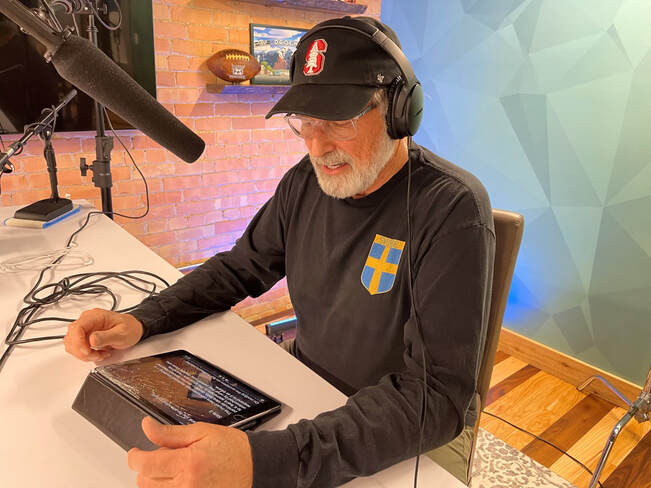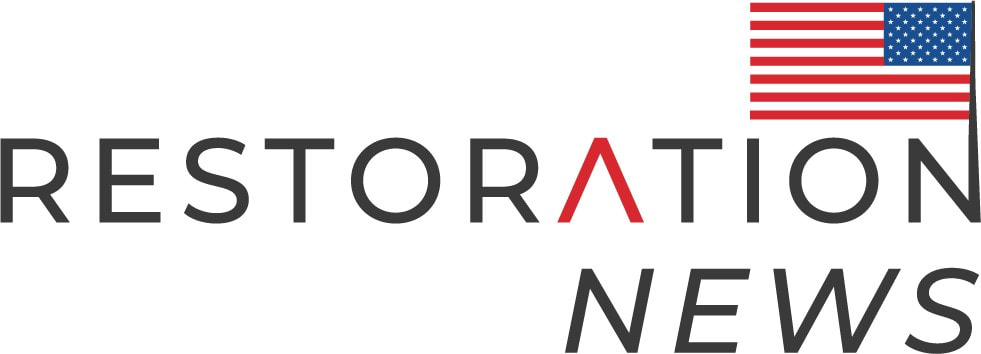How the Left Fooled States Into Boosting Democratic Turnout—and How to Stop ItBY Hayden Ludwig In elections, good data separates the winners from the losers. Left-wing operatives understand this better than anyone, which is why they’ve built the world’s most impressive machine to find, register, and turn out their preferred voters—all using tax-exempt nonprofits created to encourage charity, not politics. Activists label it “civic participation” because they’re benignly registering people to vote. In reality, they’re cynically helping just Democrats vote. Conservatives have witnessed the awesome power of this election machine in states like Georgia and Arizona. But there’s one component they’ve yet to reckon with: the Electronic Registration Information Center, better known as “ERIC.” ERIC is a 501(c)(3) public charity, not a government agency; yet this privately run organization has incredible access to sensitive information on 208 million Americans—62 percent of the total population—across 31 states. ERIC claims it uses this data strictly to help its member states maintain clean voter rolls by tracking when voters move, die, or fall off the registration list. The more states that join the compact, the theory goes, the more accurately ERIC can funnel information to them. Yet shocking new discoveries about the compact’s origins reveal ERIC’s true purpose: Compiling a near-perfect picture of where America’s voters—and potential voters—live nationwide, driving Democratic victories in battleground states. Amazingly, ERIC’s membership agreement forces states to conduct expensive voter registration campaigns, yet does not require states to clean their voter rolls, the very reason most states enrolled in the compact. This is ERIC’s value to the Left, the best data money can’t buy. Of course, ERIC doesn’t operate alone—and that’s the point. Through its founder, partisan super-lawyer David Becker, the compact acts as an acceptable, nonpartisan face for activist groups bent on undermining America’s elections. Becker heads the controversial Center for Election Innovation and Research (CEIR), which aims to expand voting-by-mail while falsely accusing conservative critics of threatening election officials and spreading “election denialism.” In 2020, CEIR spread nearly $70 million in funds from liberal billionaire Mark Zuckerberg to the states, funding Maryland’s get-out-the-vote effort targeting Baltimore and counties bordering Washington, D.C. Becker himself is a former senior activist for the far-left People for the American Way and ex-U.S. Justice Department litigator, where colleagues identified him as an “unethical,” “hard-core leftist” who “couldn’t stand conservatives.” Yet Becker remains a non-voting board member for ERIC, which funnels valuable voter data to CEIR, and acts as an informal spokesman for the ostensibly neutral group. In some ways, Becker didn’t so much leave the organization he founded a decade ago as rolled it into his growing activist network. What’s clear is that ERIC needs to go—and fast. The alternative is electoral suicide for the Republican Party. Expanding the Electorate While ERIC was created in 2012, its roots begin with the Supreme Court’s Citizens United in 2010. Many on the Left feared that the decision protecting money as free speech under the First Amendment to the Constitution would seal the Democratic Party’s fate unless radical steps were taken to bolster turnout. As the Brennan Center, a source of many proposed left-wing election “reforms,” put it in an April 2010 report: Citizens United shook all who care about American democracy. But even before the U.S. Supreme Court’s radical ruling handed vast new power to corporations and their allies, it was plain: our political system is broken. The forces of the status quo are greater than anyone could have imagined. Congress is dysfunctional. Special interests have generated gridlock and blocked change. This past year showed that unless we repair our democracy, the progressive agenda will stall [emphasis added]. The Brennan Center’s solution was to bring “millions of new voters onto the rolls through a modernized registration system—starting in 2010.” Amazingly, these organizations began using the phrase “voter registration modernization” simultaneously whenever they discussed the now-pressing need for a central data warehouse to “fix” state voter rolls, a sure sign of close coordination. The left-leaning Bipartisan Policy Center, for instance, bragged in 2016 about Virginia Gov. Terry McAuliffe’s new “voter registration modernization” system allowing residents to register online, an early Pew proposal. The litigation group Common Cause still lists under the banner “voter registration modernization” its suggestions of automatic voter registration, Election Day registration, and even pre-registration for high school students. In short, Democratic strategists had come to believe that they could not reliably win majorities with America’s current electorate, so they proposed creating a new one. Their weapon of choice: Mass nonprofit voter registration campaigns. Microtargeting By 2010 sophisticated microtargeting techniques allowed campaigns to identify and reach highly specific demographics in targeted areas—every single white female college graduate under 30 in a given congressional district, for instance. This thesis—mining data for new voters instead of winning over existing voters—drove the Left’s election strategy for the past decade. With up-to-date data, campaigns need not waste resources on voters who won’t support their agenda. David Plouffe, President Obama’s campaign manager, put it this way: “The perfect list is the aspiration of all political campaigns . . . We must . . . ensure that our lists are as close to perfect as possible . . . This is the only way we can win.” Building those lists was likely one of the reasons billionaire mega-donor George Soros helped found and remains a beneficial owner of Catalist LLC (formerly Data Warehouse), which provides: innovative, consolidated voter data services in the progressive political marketplace . . . that will allow progressives to realize the advantages of data-driven campaigns that increase the precision and power of fundraising and outreach efforts. Source: Catalist LLC Filing with Securities Exchange Commission (archived here).
But Catalist’s formidable “enhanced national voting-age person database” would only work with registered voters. What about low-propensity, left-leaning people not on the voter rolls? Statistics suggest that nearly 80 percent of newly registered voters will vote in the election cycle in which they register. One 501(c)(3) group estimates that it costs them between $44 and $52 to register a new voter; but once that individual votes he’ll typically vote in the next two to three election cycles on his own initiative. The Brennan Center estimated in 2010 that there were perhaps 65 million eligible-but-unregistered individuals nationwide, many of whom fit the Democrats’ traditional constituencies (young, unmarried, LGBTQ, non-white, college-educated, etc.). Operatives labeled these “underrepresented groups” the “New American Majority” or “Rising American Electorate,” pinning all hope for a permanent Democratic majority on their engagement. The Democracy Alliance, which represents the Left’s top donors and foundations, considered their turnout so “central to progressive long-term success” that it dedicated multiple pooled funds to “build[ing] political power [and] organizational capacity” among New American Majority voters. A secret 2015 strategy memo developed for these mega-donors boasted that “large-scale, multi-year voter registration programs” could “fundamentally reshape the electorate in as many as 13 states” by 2020, exclusively by registering “non-white” residents and ignoring unregistered voters who lean right. The budget: $105-$210 million, much or most of it paid for by tax-exempt foundations. The trick is to use 501(c)(3) nonprofits, not party committees (PACs). A 2019 donor memo from the partisan turnout group Mind the Gap explains: The most effective tactic in a Presidential year by a wide margin is nonpartisan voter registration focused on underrepresented groups . . . . Provided that such efforts are well-designed and executed, on a pre-tax basis they are 2 to 5 times more cost-effective at netting additional Democratic votes than the tactics that campaigns will invest in (chiefly, broadcast media and digital buys). Because 90 percent of the contributions we are recommending for voter registration and GOTV [get-out-the-vote] efforts will go to 501(c)(3) organizations and hence are tax-deductible, on after after-tax basis such programs are closer to 4 to 10 times more cost-effective than the next-best alternative. They are also eligible recipients of donations from donor-advised funds and private foundations [emphasis added]. The IRS only permits 501(c)(3)s to conduct nonpartisan registration and GOTV drives (all nonprofits are officially “nonpartisan”), meaning they cannot be biased in favor of one candidate or party or even have the effect of favoring just one side. Leftist groups cleverly use demographics—think the New American Majority—to circumvent this restriction. One such group is the 501(c)(3) Voter Participation Center, which mailed 85.5 million voter registration applications to potential voters ahead of the 2022 midterms explicitly targeting “people of color, young people, and unmarried women,” all likely Democratic voters. If that’s not evidence enough of bias, in his 2012 book The Victory Lab: The Secret Science of Winning Campaigns liberal journalist Sasha Issenberg described the center’s activities as an end-run around the IRS prohibition: Even though the [Voter Participation Center] was officially nonpartisan, for tax purposes, there was no secret that the goal of all its efforts was to generate new votes for Democrats [emphasis added]. In part 2, we expose ERIC’s data-driven origins This report was made possible by original research from Heather Honey and Verity Vote. www.restorationofamerica.com/restoration-news/eric/eric-the-best-data-money-cant-buy-pt-1/
0 Comments
Leave a Reply. |
AuthorBill Olson Archives
April 2024
Categories
All
|





 RSS Feed
RSS Feed
